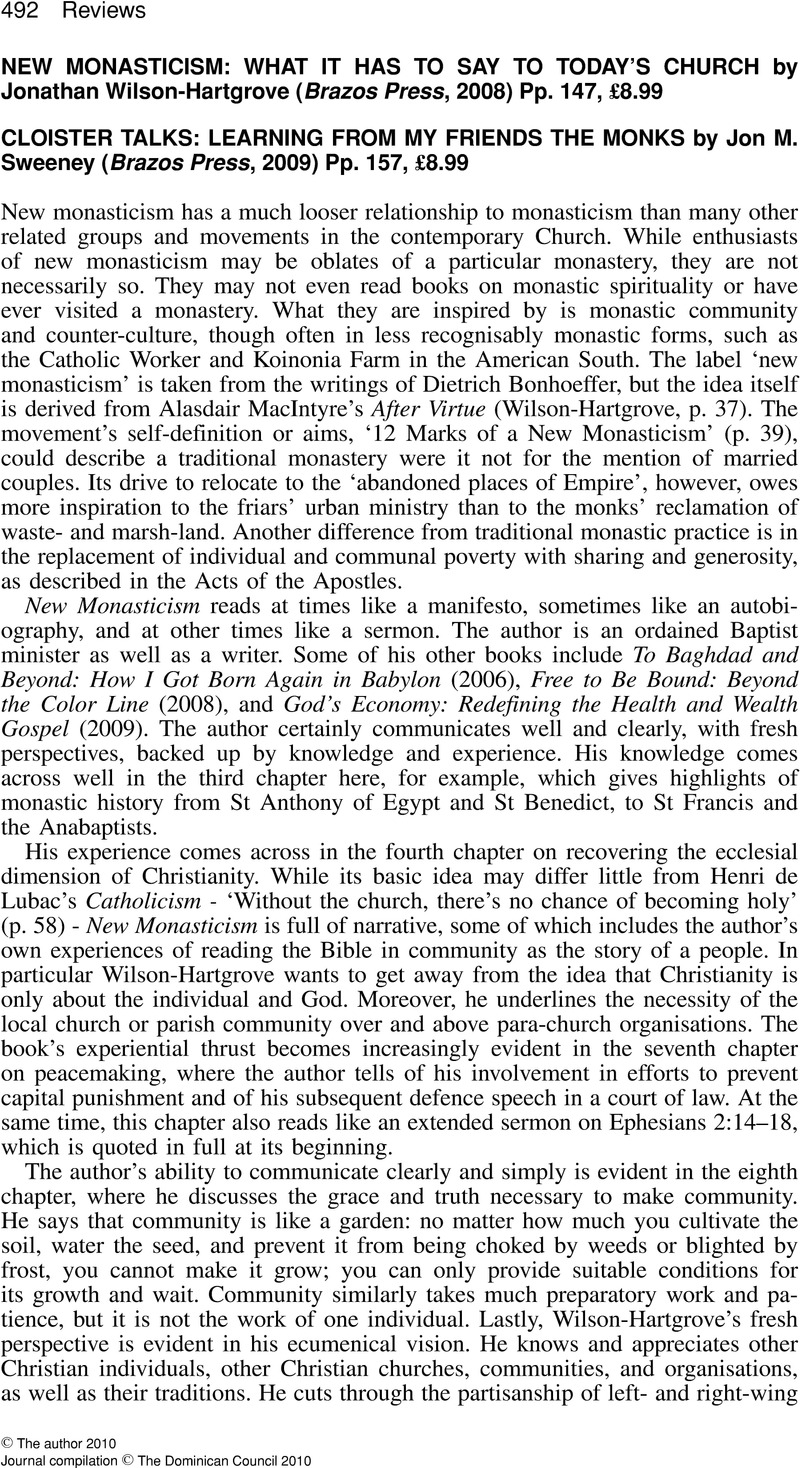No CrossRef data available.
Article contents
New Monasticism: What It Has to Say to Today's Church by Jonathan Wilson-Hartgrove (Brazos Press, 2008) Pp. 147, £8.99 - Cloister Talks: Learning From My Friends the Monks by Jon M. Sweeney (Brazos Press, 2009) Pp. 157, £8.99
Review products
New Monasticism: What It Has to Say to Today's Church by Jonathan Wilson-Hartgrove (Brazos Press, 2008) Pp. 147, £8.99
Cloister Talks: Learning From My Friends the Monks by Jon M. Sweeney (Brazos Press, 2009) Pp. 157, £8.99
Published online by Cambridge University Press: 01 January 2024
Abstract
An abstract is not available for this content so a preview has been provided. Please use the Get access link above for information on how to access this content.

Information
- Type
- Reviews
- Information
- Copyright
- Copyright © The author 2010. Journal compilation © The Dominican Council. Published by Blackwell Publishing Ltd.

